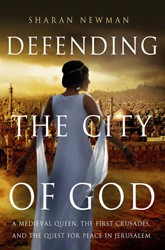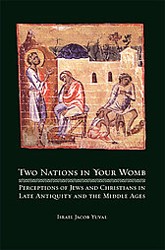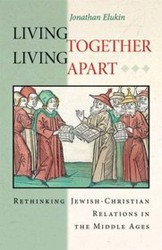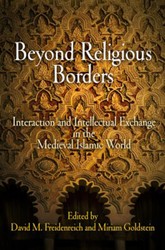Jerusalem is certainly a common answer to the oft-asked hypothetical question, “If you could time-travel to any place, where would you go?” But Jerusalem, a city that maintains religious significance for billions of people, has endured numerous political regimes across thousands of years. One would likely prefer to visit Jerusalem when it boasted a flourishing temple or during the time of Jesus. Medieval Jerusalem, a period that witnessed the early Islamic conquests and bloody Christian Crusades, would not be a preferred destination for most people.
John D. Hosler’s Jerusalem Falls: Seven Centuries of War and Peace is meant to serve as a corrective to the notion that, between the seventh and the thirteenth centuries, Jerusalem was home to pugilistic fanatics, hostile to religious minorities who dwelled therein. Violence, Hosler claims, was the exception rather than the rule. Jerusalem was a predominantly pluralistic environment in which religious tolerance among Jews, Christians, and Muslims was the norm. He argues that medieval Jerusalem’s inter- and intra-religious conflicts are best understood not as the result of interminable religious strife that motivated repeated conquests of the city, but as the consequence of local conflicts that occurred in an environment of general religious harmony.
Jerusalem Falls situates medieval Jerusalem in its historical context, showing how broader political and religious changes influenced the Holy City. As a military historian with several works of medieval history to his name, Hosler attends to the subtle diplomatic factors that shaped Jerusalem. He carefully examines extant historical sources, attending to their biases to determine what we can reasonably presume to know about the past. These discussions, some of the most engaging in the book, invite the reader to examine textual evidence like a trained historian.
Although Hosler argues that the perception of medieval Jerusalem as a state of perpetual warfare is a caricature, his chapters focus on moments of political and military transition, rather than on periods of peace. This has the effect of impressing upon the reader the violent nature of Jerusalem’s history, even if one accepts his thesis that violence is exceptional. One occasionally learns about the daily lives of some Jerusalemites, but these discussions are subordinate to the political and military narrative.
Chapter two, “Sunni and Shia: The 970s and 1070s,” is representative of Hosler’s approach. This chapter examines Jerusalem during the reign of the Shia Fatimid caliphate. It discusses attacks against the Church of the Holy Sepulchre, Christian bishops burned at the stake, and internecine Islamic strife — although Hosler emphasizes that Jerusalem remained a cosmopolitan city that even received pilgrims of several faiths during this period. In addition to the period of Fatimid rule, Jerusalem Falls recounts the dramatic history of Jerusalem during a period that included pre-Islamic Persian conquests, Byzantine rule, Christian crusades, and the reigns of the Muslim sultan Saladin and the Holy Roman Emperor Frederick II.
Hosler suggests that the history of medieval Jerusalem can instruct us today. The “rough toleration” of religious minorities may serve as a model for negotiating the myriad attachments that adherents of many faiths have to the Holy City. Even though one may disagree with Hosler’s main thesis, his lucid study sheds light on an oft-misunderstood period in the history of Jerusalem.
Brian Hillman is an assistant professor in the Department of Philosophy and Religious Studies at Towson University.





